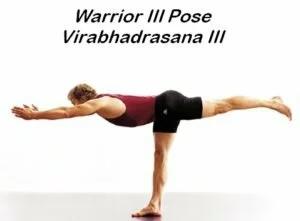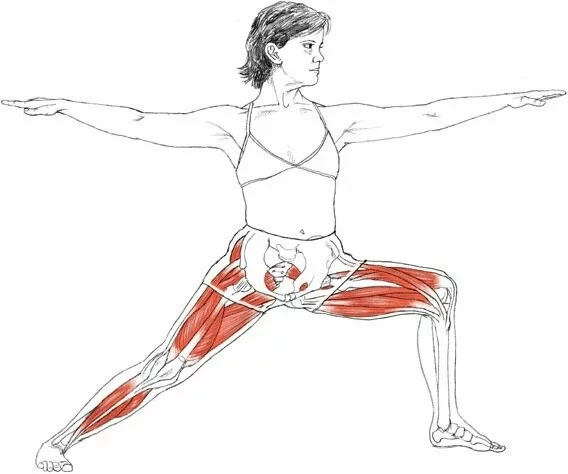 Virabhadrasana (IPA: [ʋiːrɐbʱɐd̪rɑːsɐnɐ]; Sanskrit: वीरभद्रासन; IAST: Vīrabhadrāsana) or Warrior Pose is an asana commemorating the exploits of a mythical warrior.
Virabhadrasana (IPA: [ʋiːrɐbʱɐd̪rɑːsɐnɐ]; Sanskrit: वीरभद्रासन; IAST: Vīrabhadrāsana) or Warrior Pose is an asana commemorating the exploits of a mythical warrior.
Etymology:-
The name of this asana is rooted in Hindu mythology.
The myth is that the the powerful priest Daksha made a great yagna (ritual sacrifice) but did not invite his youngest daughter Sati and her husband Shiva, the supreme ruler of the universe. But Sati found out and decided to go alone to the yagna. But when she arrived, Sati entered into an argument with her father. But unable to withstand the insults she spoke a vow to her father, “Since it was you who gave me this body I no longer wish to be associated with it.” She walked to the fire and threw herself into it. When Shiva heard of Sati’s death, he was devastated. He yanked out a lock his hair and beat it into the ground, where up rose a powerful Warrior. Shiva named this warrior, Virabhadra. Vira (hero) + Bhadra (friend) and ordered him to go to the yagna and destroy Daksha and all his guests.
Virabhadra’s first aspect, (Vīrabhadrāsana I) is his arrival, with swords in both hands, thrusting his way up through the earth from below.
In his second aspect, (Vīrabhadrāsana II) he sights his opponent, Daksha.
And in his third aspect (Vīrabhadrāsana III), moving swiftly and precisely, he decapitates Daksha’s with his sword.
Shiva then arrives at the yagna and sees the rout that Virabhadra had wrought, he picks up Virabhadra absorbing him back into his own form and transforming into Hare, the ravisher. Filled with sorrow and compassion Shiva finds Daksha’s body and giving it the head of a goat, brings him back to life. In the end Sati is also reborn.
Description:-
- It is possible to enter Vīrabhadrāsana III using vinyasas starting from Tāḍāsana:
- Starting from Tāḍāsana
- The arms are stretched up, palm touching.
- Inhaling spread the legs sideways by jumping or stepping, creating a gap of 2/3 body height.
- Exhaling turn the trunk facing to the left while rotating the left foot 90° so it faces forward and the right foot so it points slightly to the right
- Bend the left knee till the thigh is parallel to the floor, avoid extending the bent knee past the ankle and keeping the other leg straight.
- Stretch the right leg, with the knee locked.
- The head, chest, left knee, and left foot should be aligned facing forward.
- The head should be bent back and up with the eyes facing the hands.
- Hold the asana from one to four breaths.
- Return to Step 4 repeat on the other side.
 Drishti:-
Drishti:-
The Hastagrahe dṛṣṭi (Sanskrit: हसतग्रहे दृष्टि) at the palms is the correct dṛṣṭi for Vīrabhadrāsana I.
Bandhas:-
Use of bandhas increases the stability of the body in this asana. Both Mula bandha (root lock) and uddiyana bandha (abdominal lock) should be engaged, so as to creates an axial extension in the spine which assists in supporting the torso.
Variations:-
Variations in this asana involve adjusting the position of the hands:
- Placing the arms to the side.
- Pointing the arms back, palms facing upwards.
- However, these variations will move the center of balance back towards the supporting legs, making them easier to perform.
Benefits:-
- Tones the leg muscles

- Improves posture
- Improves agility
- Contracts the abdominal organs
Contraindications and obstacles:-
This asana should be avoided by practitioners who have a weak heart.
Other obstacles are:
- Tight hamstring
- Weak abdominal or spinal muscles
- Weak hamstrings
